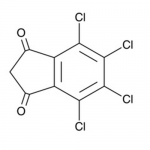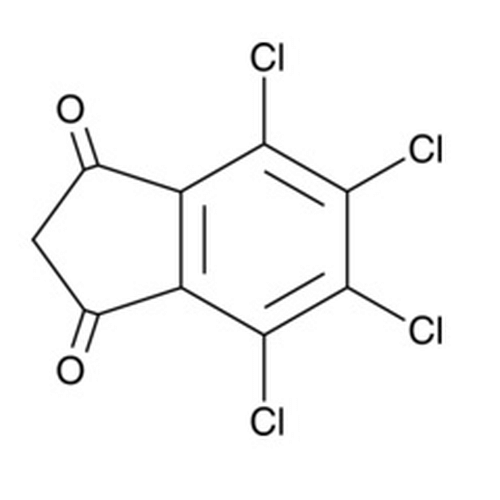| Product Name | TCID |
| Description |
DUB inhibitor |
| Purity | >97% |
| CAS No. | 30675-13-9 |
| Molecular Formula | C9H2Cl4O2 |
| Molecular Weight | 283.9 |
| Field of Use | Not for use in humans. Not for use in diagnostics or therapeutics. For in vitro research use only. |
Properties
| Storage Temperature | -20ºC |
| Shipping Temperature | Shipped Ambient |
| Product Type | Inhibitor |
| Solubility | Soluble in 25 mg/ml DMSO |
| Source | Synthetic |
| Appearance | White Solid |
| SMILES | C1C(=O)C2=C(C1=O)C(=C(C(=C2Cl)Cl)Cl)Cl |
| InChI | InChI=1S/C9H2Cl4O2/c10-6-4-2(14)1-3(15)5(4)7(11)9(13)8(6)12/h1H2 |
| InChIKey | IDLAOWFFKWRNHB-UHFFFAOYSA-N |
| Safety Phrases |
Classification: Caution – Substance not yet fully tested. Safety Phrases: S22 - Do not breathe dust S36/37/39 - Wear suitable protective clothing, gloves and eye/face protection S24/25- Avoid contact with skin and eyes Precautionary Statements: P260- Do not breathe dust/fume/gas/mist/vapours/spray. P285- In case of inadequate ventilation wear respiratory protection. P305+P351+P338- IF IN EYES: Rinse cautiously with water for several minutes. Remove contact lenses, if present and easy to do. Continue rinsing. P310- Immediately call a POISON CENTER or doctor/physician. P501- Dispose of contents/container in accordance with international regulations. Hazard Statements: H334- May cause allergy or asthma symptoms or breathing difficulties if inhaled H373- May cause damage to organs through prolonged or repeated exposure H318- Causes serious eye damage H410- Very toxic to aquatic life with long lasting effects H317- May cause an allergic skin reaction |
| Cite This Product | TCID (StressMarq Biosciences Inc., Victoria BC CANADA, Catalog # SIH-340) |
Biological Description
| Alternative Names | 4,5,6,7-tetrachloro-1H-indene-1,3(2H)-dione |
| Research Areas | Apoptosis, Cancer |
| PubChem ID | 2729042 |
| Scientific Background | TCID is a cell-permeable inhibitor of ubiquitin C-terminal hydrolase L3 (UCHL3), with an IC50 of 0.6 µM and high selectivity over UCHL1. UCHL3 is involved in the processing of ubiquitin precursors and the recycling of ubiquitin from substrates, playing a critical role in maintaining ubiquitin homeostasis. In the context of neurodegeneration, dysregulation of deubiquitinating enzymes like UCHL3 may contribute to protein aggregation and neuronal dysfunction. TCID serves as a chemical probe to dissect the role of UCHL3 in neuronal systems and may support the development of targeted therapies for diseases involving ubiquitin pathway dysregulation. |
| References |
1. Love K.R., et al. (2007) Nat. Chem. Biol. 3: 697. 2. Mtango N.R. et al. (2012) J. Cell Physiol. 227: 2022. |



Reviews
There are no reviews yet.